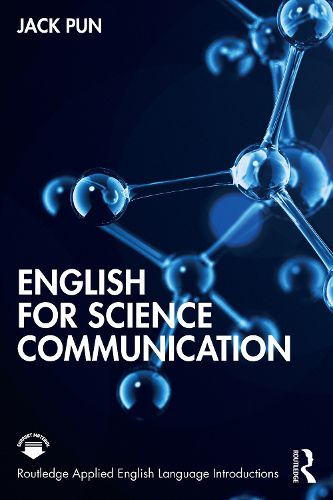Readings Newsletter
Become a Readings Member to make your shopping experience even easier.
Sign in or sign up for free!
You’re not far away from qualifying for FREE standard shipping within Australia
You’ve qualified for FREE standard shipping within Australia
The cart is loading…






English for Science Communication introduces English-language knowledge and skills for scientific communication in a range of local and international contexts. It develops students' ability to locate and critically read a variety of scientific texts and appropriately communicate, through speaking and writing, the findings of scientific projects to both specialist and non-specialist audiences.
Drawing on a range of authentic texts in the domain of science, the book introduces students to common rhetorical structures in scientific communication as well as the typical vocabulary and grammar needed to express these structures. Students will learn to evaluate and report the findings of a scientific study using a range of genres, modes, and media formats, including written scientific reports and multimodal scientific documentaries. Students will also benefit from the book's online support materials. Instructional videos on science communication and science writing - originally developed by the author and colleagues during their time at City University of Hong Kong - can be accessed via the following website: https://www.en.cityu.edu.hk/acadprofcomm/watch/science-communication.
Introducing how to understand, present, write and communicate scientific information in English, this practical guide is essential for all students using English in their science degrees, including as a second language.
$9.00 standard shipping within Australia
FREE standard shipping within Australia for orders over $100.00
Express & International shipping calculated at checkout
English for Science Communication introduces English-language knowledge and skills for scientific communication in a range of local and international contexts. It develops students' ability to locate and critically read a variety of scientific texts and appropriately communicate, through speaking and writing, the findings of scientific projects to both specialist and non-specialist audiences.
Drawing on a range of authentic texts in the domain of science, the book introduces students to common rhetorical structures in scientific communication as well as the typical vocabulary and grammar needed to express these structures. Students will learn to evaluate and report the findings of a scientific study using a range of genres, modes, and media formats, including written scientific reports and multimodal scientific documentaries. Students will also benefit from the book's online support materials. Instructional videos on science communication and science writing - originally developed by the author and colleagues during their time at City University of Hong Kong - can be accessed via the following website: https://www.en.cityu.edu.hk/acadprofcomm/watch/science-communication.
Introducing how to understand, present, write and communicate scientific information in English, this practical guide is essential for all students using English in their science degrees, including as a second language.